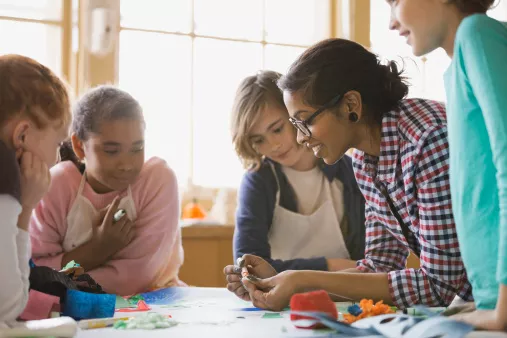As educators, it’s important to push the boundaries and try new things in the classroom. Especially towards the middle and end of the school year, students need to be engaged and excited.

When you’re a more seasoned teacher, it’s much easier to try new and riskier things—you have years of experience to fall back on if things don’t go as planned.
Things still go wrong for me all the time. After over a decade I still run into issues when trying new things in the classroom. But these issues should not stop any teacher—new or seasoned—from trying new and innovative things.
Below are some tips when creating or implementing a new idea or lesson plan:
Seek Advice from Other Teachers
While a particular idea or activity may be new to you, it may not be to one of your peers. Check in with other teachers around you to see if they have experience with something similar and can share advice.
Assess and Adjust
If a new lesson or activity does not go exactly as planned, you shouldn’t just throw out the entire thing. Evaluate different aspects and determine small potential changes to optimize the activity.
When I taught High School English, I incorporated a unit on public speaking for the first time. My students immediately dreaded speaking in front of their classmates, and the first exercise went terribly. They were all visibly nervous—and while I wanted to prepare my students for the real world (college, interviews, jobs), I wanted to do it in a way that was enjoyable for them.
Instead of scrapping the unit altogether, I modified how we did it. Rather than immediately present in front of their peers, I had each student record their speech on their phone to playback and listen to in class. This gave them the opportunity to practice a few times, if they wanted to, before showing the class. As a class, we could talk about inflection, tone, pace, and more before beginning live speeches. This made the class feel more comfortable and prepared to speak publicly.
Involve Students in the Process
When possible, be honest and upfront with your students. Tell them when you’re trying something new, and ask them to help you navigate through the experience as a class. Ask for their input—find out what they liked, what they didn’t like, and how they would do it differently.

Getting them involved in the production of a new idea or lesson plan will engage them even further in the activity.
Be Ok with Failure
Realize that not everything will go perfectly, especially when trying something new. When something goes wrong or unexpected, relax and remember that you’re learning, too. As teachers, we often remind our students to learn from their mistakes, so we should remember to try to take our own advice.
Taking risks as a new teacher may be daunting, but the possibilities are endless. Don’t wait to be a veteran teacher to try brand new things—your students will thank you for it!


